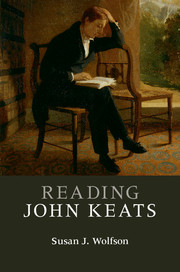Book contents
- Frontmatter
- Dedication
- Contents
- List of figures
- Preface
- Acknowledgments
- Note on the texts
- List of abbreviations
- 1 Life and times
- 2 Conceiving early poems, and Poems
- 3 Falling in and out of love with Endymion: A Poetic Romance; rereading King Lear
- 4 Venturing “new Romance”: Isabella; or, The Pot of Basil. A STORY FROM BOCCACCIO
- 5 Falling with Hyperion
- 6 Still Romancing: The Eve of St. Agnes; a dream-sonnet; Labelle dame
- 7 Reforming the sonnet and forming the Odes of spring 1819: Psyche; Nightingale; Grecian Urn; Melancholy; Indolence
- 8 Writhing, wreathing, writing Lamia
- 9 Falling in Fall 1819: The Fall of Hyperion and To Autumn
- 10 Late poems & lasting Keats
- A few famous formulations
- At a glance: Keats in context
- Notes
- Further reading
- Index
1 - Life and times
Published online by Cambridge University Press: 05 June 2015
- Frontmatter
- Dedication
- Contents
- List of figures
- Preface
- Acknowledgments
- Note on the texts
- List of abbreviations
- 1 Life and times
- 2 Conceiving early poems, and Poems
- 3 Falling in and out of love with Endymion: A Poetic Romance; rereading King Lear
- 4 Venturing “new Romance”: Isabella; or, The Pot of Basil. A STORY FROM BOCCACCIO
- 5 Falling with Hyperion
- 6 Still Romancing: The Eve of St. Agnes; a dream-sonnet; Labelle dame
- 7 Reforming the sonnet and forming the Odes of spring 1819: Psyche; Nightingale; Grecian Urn; Melancholy; Indolence
- 8 Writhing, wreathing, writing Lamia
- 9 Falling in Fall 1819: The Fall of Hyperion and To Autumn
- 10 Late poems & lasting Keats
- A few famous formulations
- At a glance: Keats in context
- Notes
- Further reading
- Index
Summary
To be a Poet, a poet among Men
“O Poesy! for thee I grasp my pen / That am not yet a glorious denizen / Of thy wide heaven” – so pledged John Keats, ardently, energetically, as he hazarded a vocation. It was a good time to be a poet. By the nineteenth century, English poetry was a celebrated heritage and ready for modern inspirations. Everyone was reading it, talking about it, even imagining poets as the voice of England. “Great spirits now on earth are sojourning,” Keats began a sonnet after visiting Benjamin Robert Haydon's art-studio in November 1816. Haydon's epic canvases (and epic self-confidence) fired Keats with a sense of a cultural momentum, inspiring a sonnet:
These, these will give the World another Heart
And other Pulses—hear ye not the hum
Of mighty workings?—————————
Listen awhile ye Nations and be dumb!
Haydon suggested the expressive dash, and he promised to send the sonnet to Wordsworth himself. Thrilled at the prospect, Keats wrote out a fresh draft (Haydon cadged it, sending a copy to Wordsworth). Wordsworth wrote back on 20 January 1817, jesting that the praises did not allow him and Haydon to be “deemed judges altogether impartial,” still thought it “vigorously conceived and well expressed,” especially the conclusion – all in all “good promise” in “young Keats.” Keats was over the moon. At Haydon's studio, he had recited lines lovingly memorized from Wordsworth's Excursion, about the “expansive and animating principle” of the old mythologies (IV.846–82), a passage that Haydon's friend Hazlitt had praised (in these terms) in a review for The Examiner. Keats had Wordsworth's 1815 Poems with him during his medical studies at Guy's Hospital. When he met Wordsworth (who visited London early in 1818), he eagerly recited the “Hymn to Pan” from Endymion Book I to him. A “very pretty piece of Paganism,” said Wordsworth. Haydon thought this “unfeeling,” but Wordsworth had more than once expressed a feeling for Paganism.
- Type
- Chapter
- Information
- Reading John Keats , pp. 1 - 19Publisher: Cambridge University PressPrint publication year: 2015

